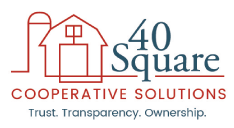Just like the agriculture industry, health care has never been – and never will be – a one-size-fits-all system.
With a low uninsured rate of 4.7%, the state of Minnesota prioritizes offering its residents access to quality, affordable health care. 40 Square Cooperative Solutions takes this to heart by offering an array of competitive health plan options geared toward the agriculture community, including farm families, agribusinesses, ag trade associations and cooperatives.
But big changes that could disrupt the system – and limit health care access for Greater Minnesotans – are coming to Minnesota with the MinnesotaCare Public Option.
Signed into law in May by Gov. Tim Walz, the public option allows three new groups to be eligible for MinnesotaCare based on a sliding scale premium: individuals and families earning above the current income limit of MinnesotaCare (200% of the federal poverty guideline or $55,000 per year for a family of four), undocumented Minnesotans and small employers with 50 or fewer employees.
But is it too good to be true? The devil may lie in the details.
According to a study conducted by FTI Consulting that evaluated the potential impact of a public option on Minnesota’s hospitals and patients, the legislation would reduce Minnesota’s uninsured rate by a mere .5% to 4.2% The study also found that over 10 years, Minnesota hospitals could lose over $2.3 billion in revenue because of the public option.
During the 2023 legislative session, 40 Square advocated against the public option during meetings with lawmakers.
“Our lobbying team met with leaders from both parties to underscore the ways in which this policy would harm rural health care services in Greater Minnesota,” 40 Square Chair Cole Trebesch said.
The potential loss of substantial could devastate Minnesota’s rural clinics and hospitals, further destabilizing the market.
“It’s going to have a severely negative impact throughout Minnesota because health care providers aren’t going to get reimbursed the same amount,” said Amanda Beavens, executive director of 40 Square. “As a result, rural clinics and hospitals could risk going out of business.”
FTI Consulting reports that “access to care in rural areas could be particularly threatened, with one third of hospitals in rural areas potentially operating at a higher risk due to the public option.” As difficult as it already is for many rural Minnesota to secure an appointment, the MinnesotaCare Public Option could prove to be even more challenging if rural hospitals and clinics are forced to close. Furthermore, some rural residents may have to drive several hours for an appointment that used to be a few minutes away.
In addition, the quality of the plan must also be considered.
“Just because it’s for everyone doesn’t mean it’s going to be a fabulous plan,” Beavens said. “It may be a good idea in theory, but how are you going to make it work?”
The public option won’t take effect until 2027, affording groups such as 40 Square time to continue pressing upon lawmakers and the Walz administration the importance of ensuring rural health care isn’t left behind. 40 Square will continue monitoring the situation while working to increase access to quality health coverage options to rural Minnesota.

